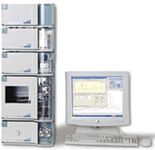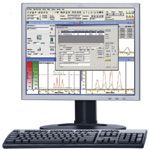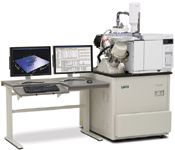Digital Update
Chromatography software update; GPC/SEC software instrument control; Light Scattering webinars; Metabolomics Library
Chromatography software update
DataApex has released the update of its chromatography software. Clarity version 2.7 brings new control drivers covering Hitachi LaChrom Elite HPLC system (L-2100/2130 pump, L-2200 autosampler, L-2300 Column Oven, L-2400 UV Detector) and the HTA autosampler HT800L. The software can now control more than 250 instruments, according to the company. The new version enhances several functionalities that bring users more comfort during installation and configuration. The update is available for current users free of charge. The demonstration version and the complete list of controlled instruments can be downloaded from the company's website. www.dataapex.com

GPC/SEC software instrument control
Polymer Standards Services has introduced a macromolecular chromatography data system for all GPC/SEC applications. WinGPC Unity is reported to allow data acquisition from instruments and adds viscometry and light scattering detection as well as copolymer analysis, 2D chromatography and semi-preparative or high speed GPC/SEC.
The list of controlled systems has now been expanded to include Waters, Shimadzu and Dionex instruments to the existing controls for PSS SECcurity GPC systems, Agilent 1100/1200 systems and Tosoh EcoSEC systems. Instrument control is added with the SystemPilot, which provides all important functions for traceability of measurements and for documentation of system performance, as well as allowing flexible method changes and convenient gradient control for the analysis of complex polymers with LAC (Polymer HPLC). www.polymer.de

Light Scattering webinars
Wyatt Technology has announced the introduction of a programme of free-of-charge, on-demand webinars about light scattering and related technologies. Designed to meet the increasing demand for scientific training on macromolecular characterization instrumentation, the online webinar series is reported to provide comprehensive information about the company's light scattering products and services. Current webinars are available on high-throughput automated dynamic light scattering using the DynaPro Plate Reader, characterizing protein–protein interactions with static light scattering and the Calypso automated protein association and aggregation system, characterizing protein conjugates and their aggregates by light scattering and field flow fractionation combined with multi-angle light scattering. www.wyatt.com
Metabolomics Library
LECO has released the LECO/Fiehn Metabolomics Library. When combined with the Pegasus HT GC–TOF-MS, TruTOF HT GC–TOFMS or Pegasus 4D GC×GC–TOFMS and ChromaTOF software, the company claims it becomes a tool for metabolite identification. More than 1100 spectra of 700 unique metabolites are contained within the library, along with retention indices based on a series of fatty acid methyl esters, according to the company. The library is fully integrated within ChromaTOF, working with the software's Library Search feature to automatically search for possible analyte matches without importing or exporting data. Developed through a unique partnership with Dr Oliver Fiehn, this extensive and expandable library was obtained using a Pegasus GC–TOF-MS at Dr Fiehn's own laboratory at the University of California-Davis. www.leco.com


New Method Explored for the Detection of CECs in Crops Irrigated with Contaminated Water
April 30th 2025This new study presents a validated QuEChERS–LC-MS/MS method for detecting eight persistent, mobile, and toxic substances in escarole, tomatoes, and tomato leaves irrigated with contaminated water.

.png&w=3840&q=75)

.png&w=3840&q=75)



.png&w=3840&q=75)



.png&w=3840&q=75)










